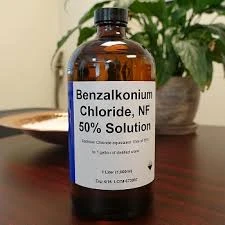Exploring the Properties and Applications of PAM Polyacrylamide in Modern Technologies
The Versatility and Importance of PAM Polyacrylamide in Various Applications
Polyacrylamide (PAM) is a water-soluble polymer that finds a multitude of applications across various industries, including agriculture, wastewater treatment, and oil extraction. Its unique chemical structure allows it to form physical gels and act as a flocculating agent, making it an invaluable tool in many processes.
PAM is synthesized through the polymerization of acrylamide monomers, which undergoes a process that creates long-chain molecules. These molecules can be modified in structure to enhance specific properties. For instance, PAM can be cationic, anionic, or non-ionic, depending on the intended use. This versatility makes PAM adaptable to different environments and applications.
The Versatility and Importance of PAM Polyacrylamide in Various Applications
In the field of wastewater management, PAM plays a significant role in the treatment of municipal and industrial waste. Its flocculating properties promote the aggregation of suspended particles, allowing for easier removal in sedimentation processes. This is particularly beneficial in clarifying water, making it suitable for discharge or further treatment. The effectiveness of PAM in this application leads to improved water quality and compliance with environmental regulations.
pam polyacrylamide

Moreover, PAM is employed in oil recovery processes, particularly in enhanced oil recovery (EOR) techniques. Its ability to increase viscosity improves the mobility of crude oil in reservoirs, thereby enhancing extraction efficiency. The use of PAM in EOR not only maximizes oil recovery but also minimizes environmental impacts by reducing the need for more invasive extraction methods.
Despite its numerous advantages, the use of PAM is not without concerns, particularly regarding its potential toxicity. Acrylamide, a neurotoxin and probable human carcinogen, can be released during the degradation of PAM. To address this issue, researchers are continually exploring safer alternatives and methods to mitigate any potential risks associated with PAM use. Rigorous regulations and guidelines are also in place in many industries to ensure that PAM is used responsibly and safely.
In recent years, the development of biodegradable and environmentally friendly PAM formulations has gained traction. These advances aim to reduce the environmental footprint of PAM applications while maintaining its effectiveness. Researchers are experimenting with natural polymers and innovative biotechnological approaches to create sustainable alternatives that promise similar performance levels without the associated risks.
In conclusion, PAM polyacrylamide is a versatile polymer with significant implications for agriculture, wastewater treatment, and oil recovery. Its ability to improve soil quality, enhance water management, and boost oil extraction techniques exemplifies its importance across multiple sectors. While potential health concerns necessitate careful handling and further research, the ongoing development of safer PAM alternatives indicates a bright future for this valuable material. As industries continue to evolve and prioritize sustainability, PAM will likely play a crucial role in achieving these goals while meeting the challenges of modern environmental management.
-
Water Treatment with Flocculant Water TreatmentNewsJun.12,2025
-
Polymaleic AnhydrideNewsJun.12,2025
-
Polyaspartic AcidNewsJun.12,2025
-
Enhance Industrial Processes with IsothiazolinonesNewsJun.12,2025
-
Enhance Industrial Processes with PBTCA SolutionsNewsJun.12,2025
-
Dodecyldimethylbenzylammonium Chloride SolutionsNewsJun.12,2025





